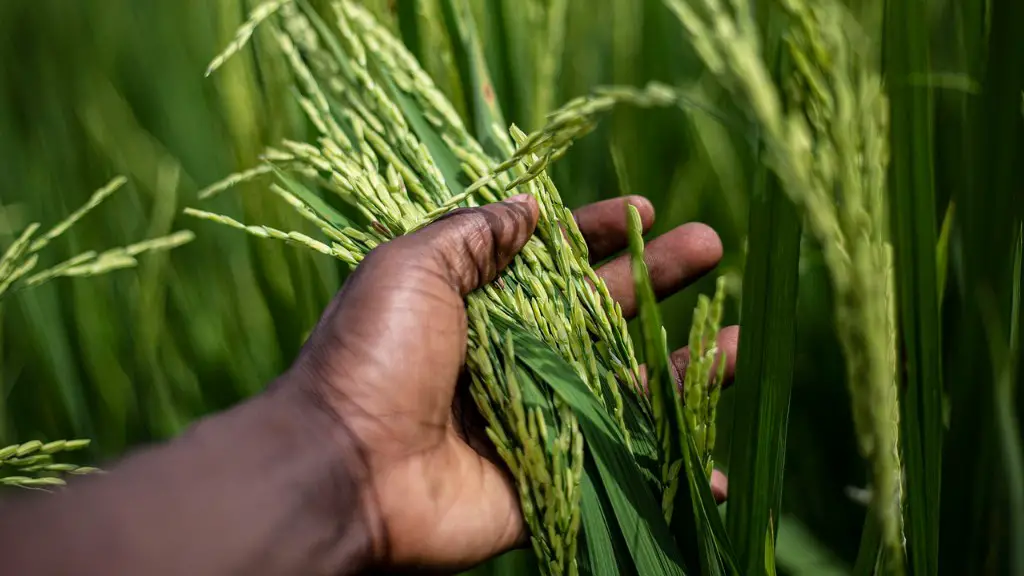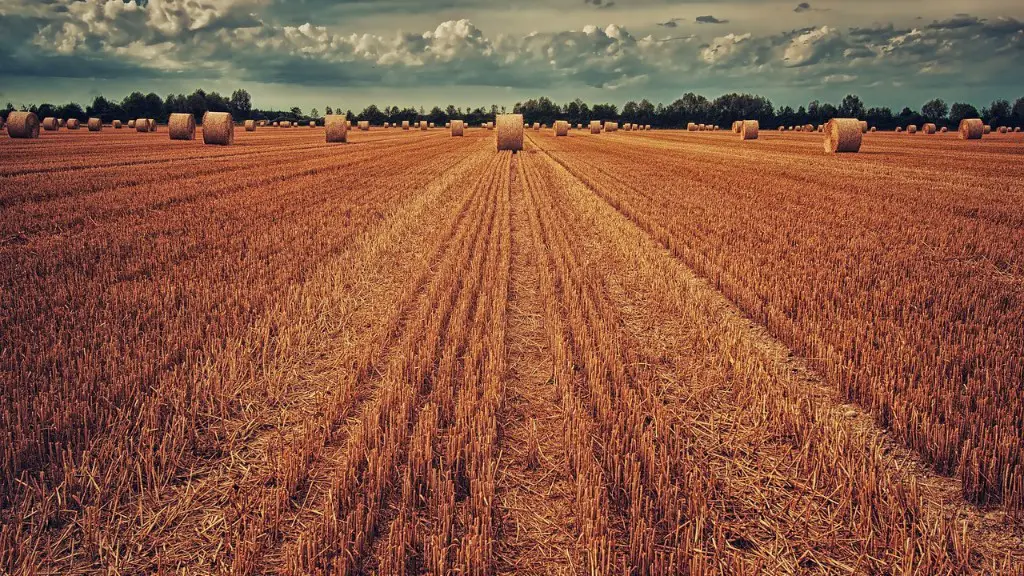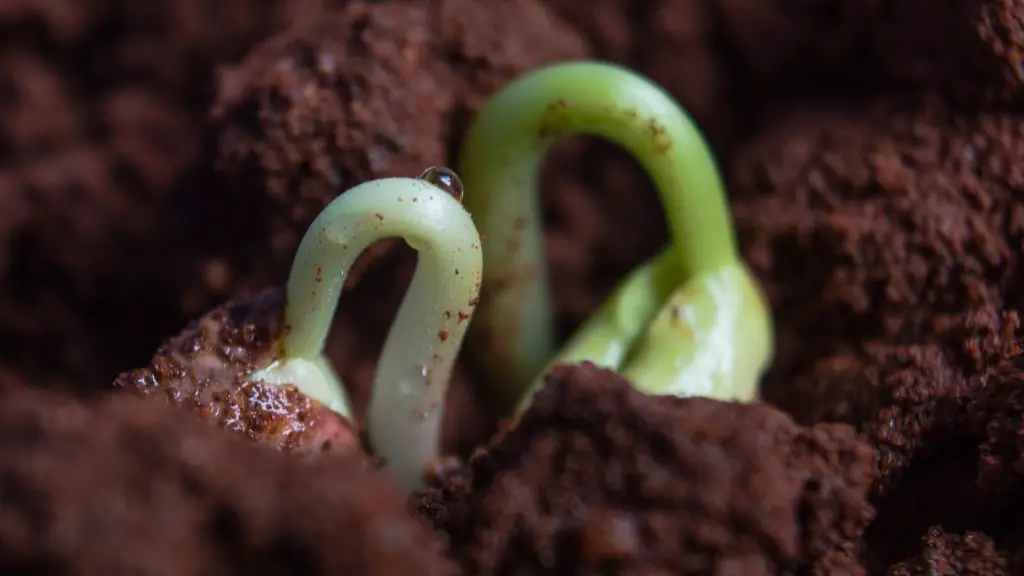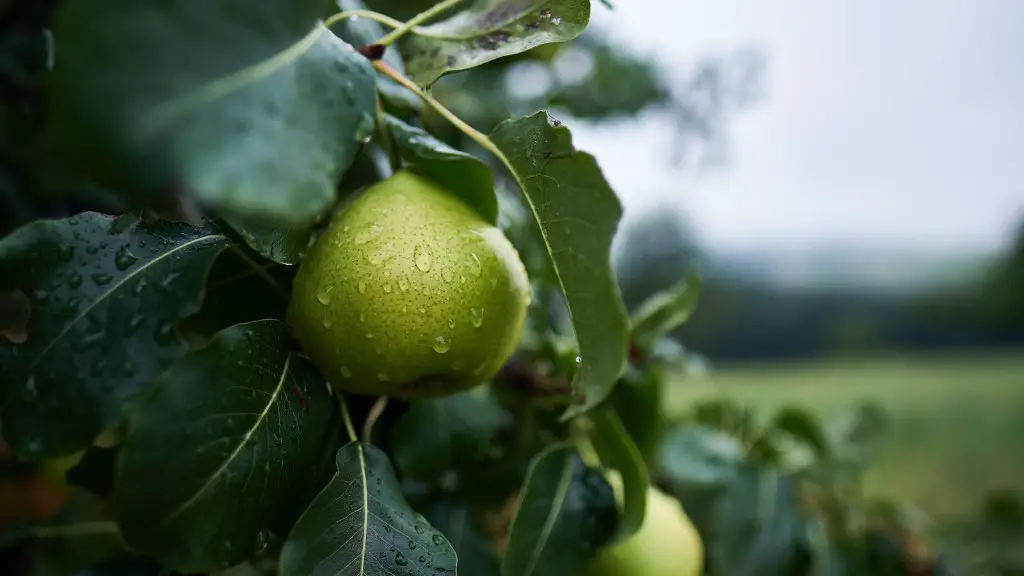Agriculture in Haiti can be challenging due to a variety of factors. These include geographic layout, climate, lack of agricultural resources and infrastructure, lack of agricultural education, overpopulation, and poverty. Haiti’s rugged terrain makes it difficult to cultivate large tracts of land and provides limited access to markets or agricultural aid. Additionally, Haiti is heavily affected by drought which makes irrigation and land drainage an essential component to successful farming. Unfortunately, Haiti does not have many resources in these areas either, which only exacerbates the challenge.
Climate is an important factor when considering agriculture in Haiti. While it does provide abundant sunshine, the temperature variation throughout the year has a major impact on the crops grown there. Other aspects such as precipitation and winds can also have an effect on the production of these crops. Additionally, the lack of nutrients in the soil due to overgrazing and deforestation has led to soil erosion and soil fertility issues, making Haitian agriculture more difficult.
The lack of agricultural resources and infrastructure also adds to the difficulty of agriculture in Haiti. Farming tools such as plows, tractors, and other necessary items are either scarce or too expensive for the majority of farmers. Additionally, the lack of irrigation and land drainage limits the farming potential of the region. Furthermore, access to high quality seeds and fertilizers is often limited by the cost and availability, making it difficult to obtain resources necessary to obtain a successful yield.
The lack of agricultural education is another major challenge for Haitian agriculture. There is limited access to educational resources, making it difficult for farmers to obtain the knowledge and understanding necessary for successful farming. This lack of education prevents farmers from using the most productive agricultural practices, which can lead to low yields. Furthermore, it has been estimated that only 14% of farmers in Haiti have access to education and training services.
The overpopulation of the country is a major hindrance to Haitian agriculture. Small farm plots have to be divided among a larger number of people, making it difficult for a single family to produce enough food to meet their needs. Furthermore, the limited job opportunities lead to poverty and an inability to purchase the food and agricultural inputs necessary to achieve a healthy yield.
Finally, poverty has an immense impact on Haitian agriculture. With limited resources and a lack of opportunities, many farmers are unable to purchase the necessary inputs to produce a successful and high-yielding crop. Without access to high quality seeds and fertilizers, many farmers are restricted to planting traditional, low-yielded varieties. Furthermore, inadequate access to credit, extension services, and other important agricultural services hinders their potential production.
Impact of Drought on Haitian Agriculture
Drought has a major impact on Haitian agriculture, as it can significantly reduce crop yields, which results in higher food prices and an increased risk of food insecurity. Drought can occur from prolonged periods of insufficient precipitation or excessive evaporation, resulting in water scarcity. As a result, this can lead to water shortages, thus hindering agricultural activities such as irrigation, land drainage, and the use of fertilizers. The result of this is poor crop yields and poor quality of crops, leading to an increase in poverty levels.
The lack of irrigation and land drainage, reduces the ability of farmers to access and use water efficiently, thus limiting the potential of their harvests. Furthermore, the limited access to high quality inputs, leads to low yields, and therefore, limited access to food, a higher risk of malnutrition, and an increase in poverty levels. Additionally, drought can cause soil erosion, which further reduces the soil fertility, and therefore the production potential.
Furthermore, the lack of education and knowledge on agricultural practices, further limits the potential effectiveness of the practices and inputs used by the farmers. Without access to the proper information, farmers are unable to use appropriate practices, leading to poor crop yields and soil degradation. This then further increases the risk of food insecurity.
Drought in Haiti has long ranging implications for agriculture, food security, and poverty levels. The limited resources and infrastructure makes it difficult for farmers to gain access to the inputs and knowledge necessary for successful and high-yielding harvests. Furthermore, the lack of irrigation and land drainage exacerbates the problem, limiting the potential of farmers to produce beneficial yields. As a result, drought has significant implications on Haitian agriculture.
Lack of Agriculture Education & Prospects in Haiti
The lack of agricultural education and prospects in Haiti is another major hurdle to successful and sustainable farming. As previously mentioned, only 14% of farmers in Haiti have access to education and training services, leading to an inadequate understanding of proper agricultural practices and principles. Furthermore, without access to resources such as credit and market access, farmers are unable to purchase the necessary inputs to produce a successful yield.
Due to the lack of education and resources, many farmers are unable to improve their production capabilities, leading to decreased yields and a higher risk of food insecurity. Additionally, many farmers struggle to find buyers for their crops, due to the lack of market access and infrastructure. This results in the crops having to be sold locally at low prices, further increasing the risk of poverty and malnutrition.
The lack of agricultural education and prospects also has implications on the country’s unemployment rate. Without the access to educational resources, farmers are unable to become more successful, thus resulting in limited job opportunities. Furthermore, with few prospects, many young people are unable to make an adequate living, thus leaving them vulnerable to poverty and limited educational opportunities.
The lack of access to resources, infrastructure, education, and prospects makes it difficult for Haitian farmers to be successful in their farming efforts. Without access to the necessary educational opportunities and resources, Haitian farmers are unable to produce the yields necessary to ensure a successful harvest. Additionally, without access to markets, farmers are unable to sell their produce at higher prices, limiting their income and ability to improve their production.
Environmental Effects of Haitian Agriculture
Haitian agriculture has a major environmental impact, which can be detrimental to the health of the land and its people. Poor land management practices, including overgrazing and deforestation, can lead to soil erosion and loss of soil fertility. This results in decreased yields and limited crop options, both of which can decrease a family’s ability to produce food and make a living.
Pesticides and fertilizers can also be a hazard to the environment, due to their toxicity and potential to leach into groundwater. The lack of regulation and access to safe fertilizers, necessitates the use of highly toxic and dangerous products. Additionally, the lack of infrastructure can lead to run-off and water pollution, further damaging the environment.
Climate change is another environmental effect of Haitian agriculture, with inevitable implications for the country’s agriculture. The increased temperatures and weather extremes, can cause drought, flooding, and other unpredictable weather patterns. This in turn can drastically reduce crop yields and limit the number of successful crops harvested each year. Furthermore, the altered weather patterns can also lead to severe drought, making the already challenging task of agriculture in Haiti, even more difficult.
Farming in Haiti is a difficult endeavor due to the combination of both social and environmental factors. Overpopulation, poverty, lack of infrastructure and resources, and climate change are all detrimental factors that can impede farmers’ production. Additionally, environmental factors such as soil erosion and water pollution, can have lasting impacts on the health of the land, decreasing productivity levels and increasing the risk of food insecurity.
Government Assistance for Haitian Agriculture
The Haitian government has attempted to improve agricultural practices, increase yields, and decrease food insecurity through various aid programs. These programs aim to provide farmers with access to resources such as: credit, knowledge, improved technology, and other necessary inputs, in order to increase yields and improve the lives of the people living in Haiti.
These programs can be divided into two categories, emergency aid and long-term development aid. Emergency aid is used to address immediate issues such as severe shortages, while long-term development aid is focused on finding sustainable solutions to the underlying causes of poverty and food insecurity. For example, the World Bank has funded several agricultural development projects, in an effort to provide access to the necessary tools and resources to achieve improved yields and incomes.
However, though these programs are beneficial and important for Haitian agriculture, their success has been limited for a number of reasons. These include: lack of access to agricultural inputs, limited market access, limited access to education and training, deficient infrastructure and insufficient governmental funds.
Despite these limitations, with the help of international aid and other external support, significant progress has been made in improving agricultural practices in Haiti. The Haitian government has taken an active role in investing in the country’s agriculture, with the construction of roads, bridges and other infrastructure, as well as initiatives aimed at providing access to credit and agricultural extension services. This has enabled farmers to access the resources and inputs necessary to improve their yields and incomes.
Although more needs to be done to ensure that Haitian farmers can realize the full potential of their crops, the government has made steps in the right direction. By investing in the infrastructure, credit and education necessary, the Haitian government has been able to make positive strides in improving the state of the country’s agricultural sector. In order to ensure the sustainability of Haitian agriculture, these factors must be taken into consideration and addressed.
Non-Traditional Agricultural Practices Used in Haiti
Traditional agricultural methods in Haiti, such as subsistence farming, have become impractical due to the limited land and resources. Therefore, Haitian farmers have had to develop different techniques in order to produce higher yields. Some of the most common methods used are: agroforestry, aquaculture, home-gardening, and zero-tillage farming.
Agroforestry is a form of agriculture in which trees, shrubs and other cash crops are planted together, allowing the farmer to diversify their crops and increase the nutrient content of the soil. This practice also helps to prevent soil erosion and water pollution, by reducing the amount of rainwater evaporated from fields. Additionally, by diversifying their crops, farmers can make use of a wider array of market opportunities, thus improving the profitability of the farm.
Aquaculture is another non-traditional farming method used in Haiti, which involves the cultivation of fish, plants and other aquatic organisms in man-made water bodies. This method can have numerous benefits, such as conserving water supplies, providing additional food sources, and reducing the demand for wild-caught seafood. Additionally, aquaculture is a low-cost method of farming, which can be implemented in small areas and with limited resources.
Home gardening is another popular method used by Haitians, allowing them to easily produce fruits and vegetables on small plots of land. This method requires less maintenance, as it does not involve land preparation or tilling, thus making it cost effective. Additionally, home gardening allows higher yields on smaller plots of land, saving space and allowing more people to produce more food.
Zero-tillage farming is a technique in which a farmer leaves the land undisturbed, while rotating crops to reduce pest presence. This reduces the need for land preparation, thus reducing costs and improving water conservation. Additionally, this method helps to prevent soil erosion and the degradation of soil, thus preserving the land for future generations.
The implementation of different agricultural methods in Haiti has allowed for higher yields, improved productivity levels and increased food security. Non-traditional farming practices such as agroforestry, aquaculture, home gardening, and zero-tillage, have enabled farmers to produce greater amounts of food on smaller plots of land. Furthermore, these methods have allowed farmers to benefit from increased market opportunities and access to resources, thus improving the sustainability of Haitian agriculture.





